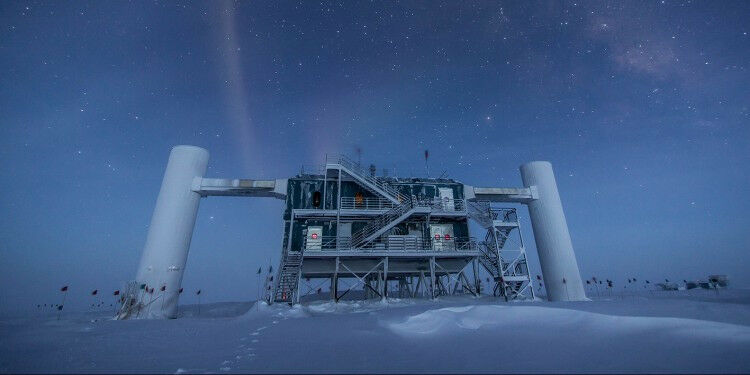‘Neutrinos are very hard to hit upon’

“IceCube” spokesperson Ignacio Taboada reviews at the travel of the experiment
Researchers from a number of international locations are the usage of the IceCube experiment to seek for neutrinos within the ice on the South Pole. Those difficult-to-detect debris achieve Earth from the cosmos. About 220 of the physicists concerned within the experiment meet for the primary era on the College of Münster from 18 to 22 March for the spring assembly of the IceCube collaboration. The assembly is hosted through Prof Alexander Kappes and his operating team on the Institute for Nuclear Physics on the College of Münster. In this hour, Christina Hoppenbrock interviewed the spokesperson of the IceCube collaboration, Prof Ignacio Taboada from the Georgia Institute of Generation, USA, concerning the demanding situations of neutrino analysis and the travel of the experiment.
You travelled from the US to talk about clinical travel – why in Münster?
Two times a generation, the collaboration meets to talk about travel on analysis with IceCube. The spring assembly is hosted through Alexander Kappes and his team in popularity in their chief position inside of IceCube and the proposed IceCube-Gen2.
Neutrinos are often referred to as “ghost particles”. What’s so hidden about them?
Neutrinos are very dry to ’catch’. A excellent instance is a pane of glass. Glass is clear to bright. Lots of the bright is going thru it – however now not all. When you take a look at a pane of glass edgewise, you notice that it has a inexperienced tint. That is on account of the bright that has ’interacted’ within the glass. To neutrinos topic is clear, similar to for bright glass is clear. However to oppose a couple of neutrinos a pane of glass isn’t plethora, rather you wish to have vast detectors. IceCube is one cubic kilometer, the amount of a tiny mountain, in order that we will catch the only a few neutrinos that do engage.
How does that paintings precisely?
The neutrinos that engage with topic make unutilized debris. Those debris proceed thru ice akin the rate of bright and make blue bright, referred to as Cherenkov radiation. We apply neutrinos with eye sensors, referred to as Virtual Vision Modules (DOM), that seize this blue bright. Figuring out when bright was once captured at a DOM and what sort of bright (it may be as tiny as one photon), we could us know the path from the place the neutrino got here from and the calories of the neutrino.
Within the life two years, the IceCube consortium has printed two broadly seemed articles within the magazine “Science” …

In November 2022 we reported 79 neutrinos recorded in over 9 years of observations from the galaxy NGC 1068. Novice astronomers might know this galaxy a Messier 77 and it may be observable with binoculars. The space to it’s 47 million bright years. This sounds monumental, however NGC 1068 is if truth be told close by, consistent with cosmic scales. What makes me maximum fascinated about the NGC 1068 statement is that neutrino emission seems to be “steady”. If we doubled the statement era, we will have to have the ability to kind of double the collection of neutrinos that we’ve got seen from NGC 1068. This build up within the collection of neutrinos will allow us to grasp the processes at NGC 1068 that generate the neutrinos. It’s thought that those neutrinos are created akin a supermassive cloudy hollow on the heart of NGC 1068, however many main points are opaque.
And what was once the second one article about?
In June 2023 we reported the statement of our personal galaxy, the Milky Means with neutrinos. The Milky Means is anticipated to have neutrino assets – most probably the residue of life supernova explosions. And the galaxy is full of cosmic rays (created in the similar residue from supernovae explosions), that are protons, helium nuclei and heavier nuclei. Each neutrino assets within the Milky Means and the propagation of cosmic rays throughout the galaxy lead to neutrinos perceptible through IceCube. Recently we will’t free person assets from the propagation of cosmic rays within the galaxy. However we look ahead to fixing that query.
… like many alternative questions, proper?
That’s proper. The IceCube-Gen2 observatory with a quantity 8 instances greater than that of IceCube has been proposed as a successor. Gen2 will allow the statement of now not simply two galaxies, however perhaps two lot galaxies. And It will have important enhanced sensitivity to raised calories neutrinos through including radio antennas to the eye sensors.
Concerning the IceCube venture:
The IceCube Neutrino Observatory is situated on the Amundsen-Scott South Pole Station. The observatory is controlled and operated through the Wisconsin IceCube Particle Astrophysics Centre on the College of Wisconsin-Madison. The IceCube collaboration counts over 400 hundred physicists that utility information from the Observatory, to check the Cosmos with neutrinos. Main accomplishments through the collaboration come with the invention of astrophysical high-energy neutrinos, the statement of neutrinos from two galaxies and the statement of our personal galaxy, the Milky Means, with neutrinos.
Upcoming the US, Germany is essentially the most remarkable spouse in IceCube. The schools of Aachen, Berlin (Humboldt College), Bochum, Dortmund, Erlangen-Nuremberg, Mainz, Munich (Technical College), Münster and Wuppertal, in addition to the Helmholtz centres Deutsches Elektronen Synchrotron DESY and the Karlsruhe Institute of Generation (KIT) are concerned.




